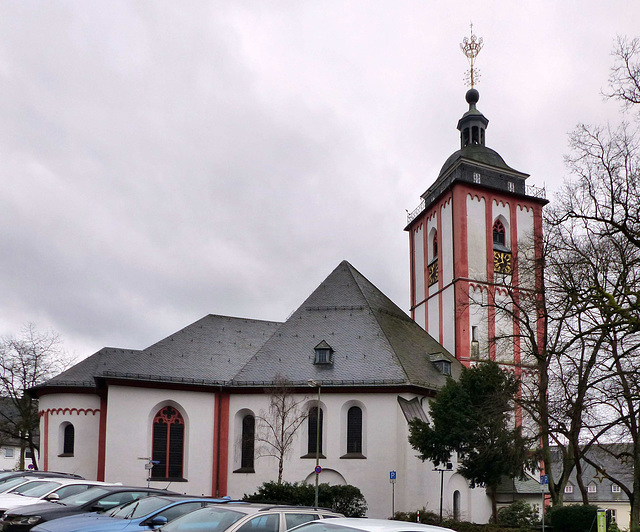Siegen - Martinikirche
Freudenberg - Alter Flecken
Freudenberg - Protestant Church
Leutesdorf - St. Laurentius
Nickenich - St. Arnulf
Nickenich - St. Arnulf
Kloster Steinfeld
Kloster Steinfeld
Kloster Steinfeld
Kloster Steinfeld
Hillesheim - Augustiner Kloster
Stavelot - Abbaye de Stavelot
Stavelot - Abbaye de Stavelot
Stavelot - Saint Sébastien
Stavelot - Saint Sébastien
Stavelot - Dumoulin
Stavelot - Blancs Moussi
Poulseur - Monaco F1
Poulseur - Monaco F1
Aywaille - Notre-Dame de Dieupart
Aywaille - Notre-Dame de Dieupart
Aywaille - Saint Pierre
Aywaille - Saint Pierre
Siegen - Nikolaikirche
Siegen - St. Michael
Attendorn - Südsauerlandmuseum
Attendorn - "Hansestadt Attendorn"
Attendorn - St. Johanes Baptist
Attendorn - St. Johanes Baptist
Attendorn - St. Johanes Baptist
Bonn - Schwarzer Nasen Tag
Bonn - Münster
Bonn - Münster
Linz am Rhein - Feinkost
Linz am Rhein - Gumball Machine
Cologne - Schnütgen Museum
Cologne - Schnütgen Museum
Cologne - Schnütgen Museum
Cologne - Schnütgen Museum
Cologne - Schnütgen Museum
Cologne - Schnütgen Museum
Cologne - Schnütgen Museum
Cologne - Schnütgen Museum
Cologne - Schnütgen Museum
Cologne - Schnütgen Museum
Location
Keywords
Authorizations, license
-
Visible by: Everyone -
All rights reserved
-
139 visits
Siegen - Nikolaikirche


The city of Siegen (pop. 100.000) got its name probably from the
river name Sieg. The city´s history is connected to mining, some mines date back to the late Iron Age.
In 1224 the "Oberes Schloss" ("upper castle") existed already was already standing at this time, in 1303, the town was granted town rights.
In the 16th century, the town was surrounded by walls with 16 towers and three town gates. After the Refomarmation Protestands (Calvinists) and Catholics lived here side by side. A sometimes violent neighborhood. Mid 18th century the wealthy area was part of the Principality of Orange-Nassau, ruled by William I, who was Prince of Orange-Nassau, Prince of Orange and the first King of the Netherlands.
In 1815 Siegen was assigned to the Prussian Province of Westphalia.
In 1577, Peter Paul Rubens, the the best known son of the city, was born here to the Calvinists Jan Rubens and Maria Pypelincks, who had fled Antwerp.
The Nikolaikirche was erected in the center of the medieval town within the 13th century. It was obviously not possible to built a "traditional" church with a long nave on the hilly ground, so the church was erected as a complex, but compact hexagon.
On top of the tower is a golden Crown, called the "Krönchen", Siegen´s landmark. The crown was presented to the citizens of Siegen in 1652 by Johann Moritz zu Nassau-Siegen, after his ennoblement.
The crown is about 1,90 m high and has a diameter of about 1,35 m. Seen on top of the tower is meanwhile a copy. The original from 1652 is kept inside the church.
river name Sieg. The city´s history is connected to mining, some mines date back to the late Iron Age.
In 1224 the "Oberes Schloss" ("upper castle") existed already was already standing at this time, in 1303, the town was granted town rights.
In the 16th century, the town was surrounded by walls with 16 towers and three town gates. After the Refomarmation Protestands (Calvinists) and Catholics lived here side by side. A sometimes violent neighborhood. Mid 18th century the wealthy area was part of the Principality of Orange-Nassau, ruled by William I, who was Prince of Orange-Nassau, Prince of Orange and the first King of the Netherlands.
In 1815 Siegen was assigned to the Prussian Province of Westphalia.
In 1577, Peter Paul Rubens, the the best known son of the city, was born here to the Calvinists Jan Rubens and Maria Pypelincks, who had fled Antwerp.
The Nikolaikirche was erected in the center of the medieval town within the 13th century. It was obviously not possible to built a "traditional" church with a long nave on the hilly ground, so the church was erected as a complex, but compact hexagon.
On top of the tower is a golden Crown, called the "Krönchen", Siegen´s landmark. The crown was presented to the citizens of Siegen in 1652 by Johann Moritz zu Nassau-Siegen, after his ennoblement.
The crown is about 1,90 m high and has a diameter of about 1,35 m. Seen on top of the tower is meanwhile a copy. The original from 1652 is kept inside the church.
- Keyboard shortcuts:
Jump to top
RSS feed- Latest comments - Subscribe to the comment feeds of this photo
- ipernity © 2007-2024
- Help & Contact
|
Club news
|
About ipernity
|
History |
ipernity Club & Prices |
Guide of good conduct
Donate | Group guidelines | Privacy policy | Terms of use | Statutes | In memoria -
Facebook
Twitter

Sign-in to write a comment.